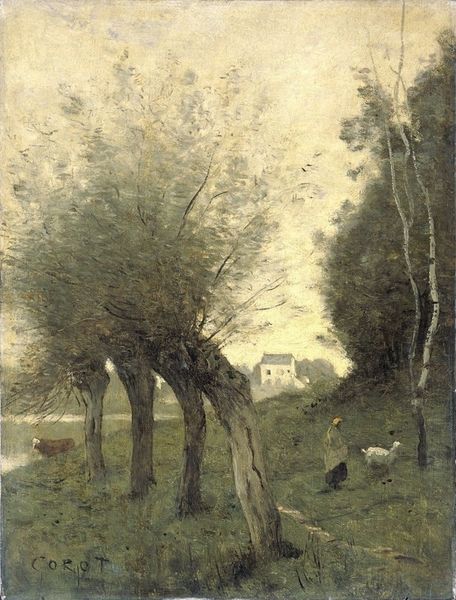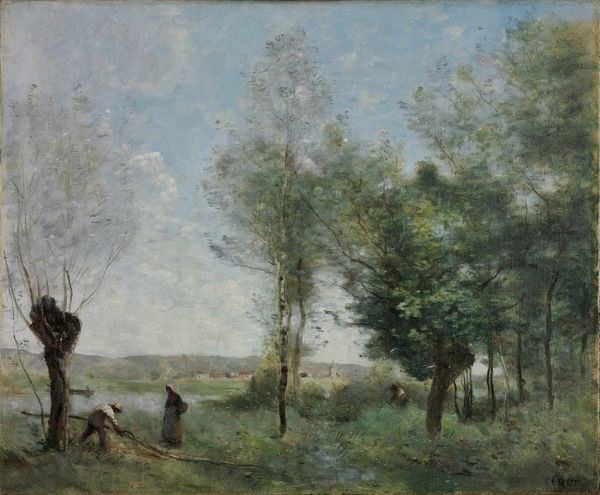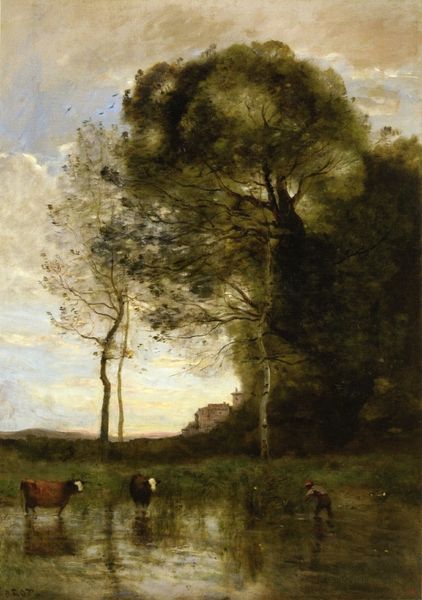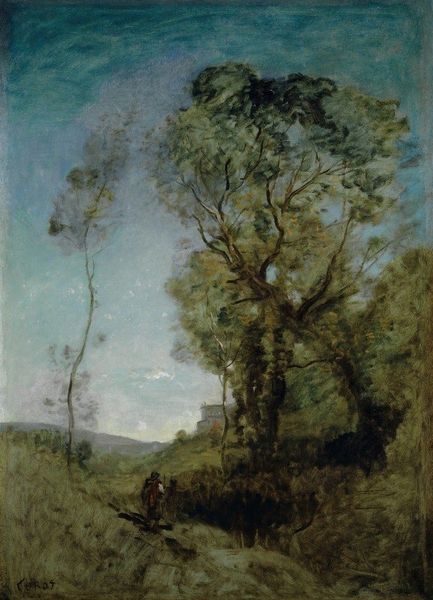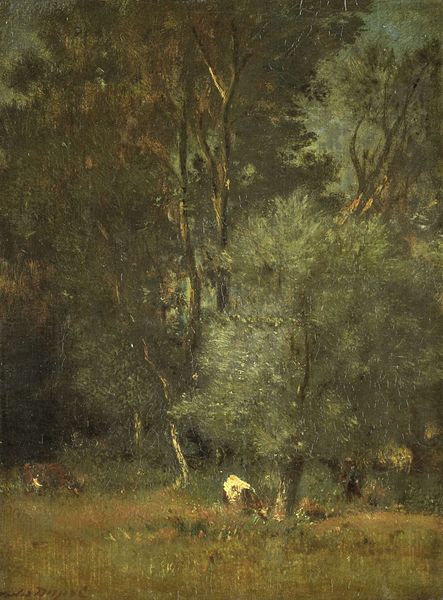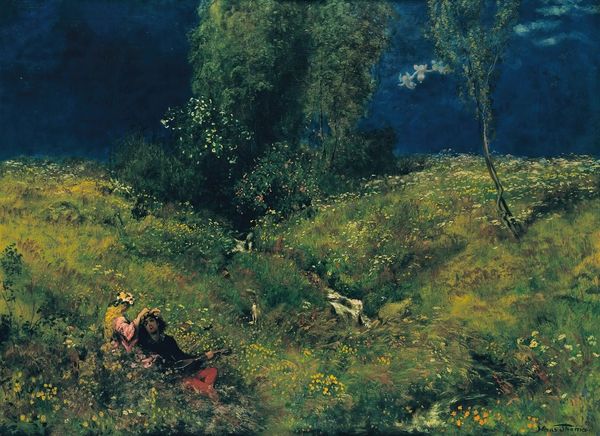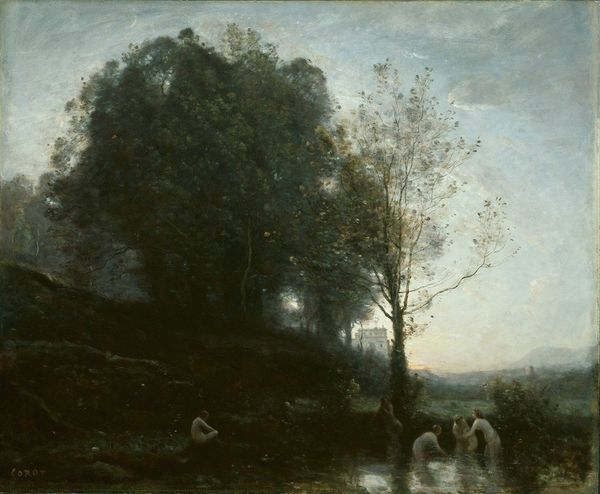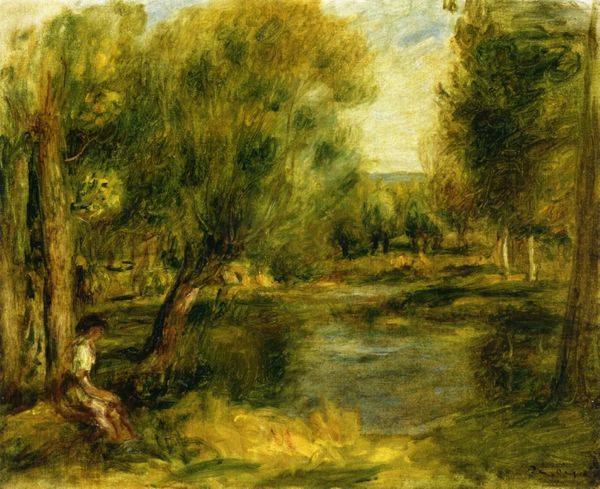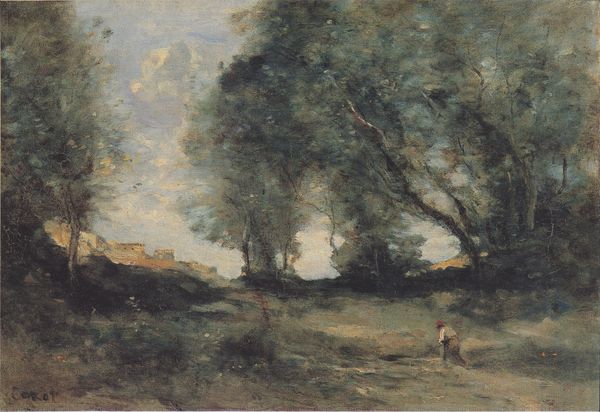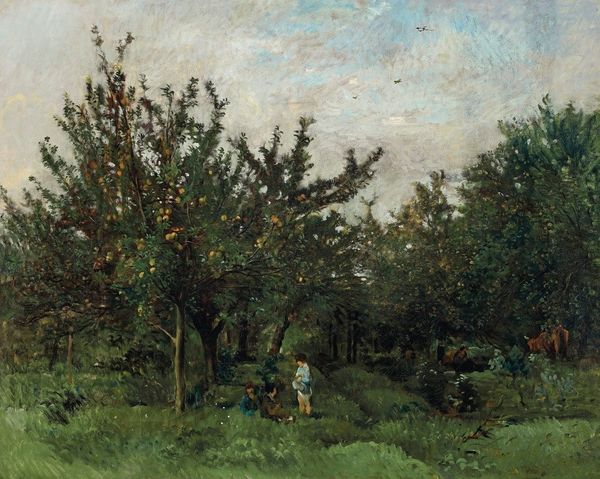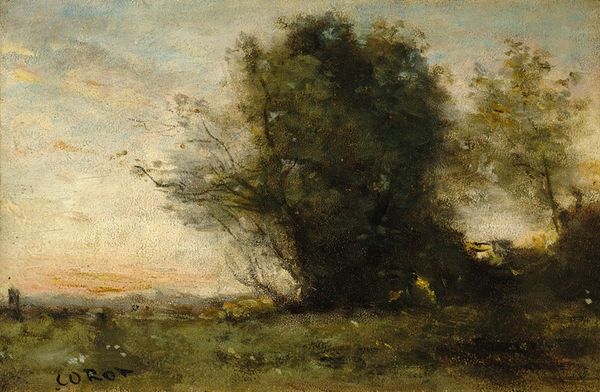
Copyright: Public Domain: Artvee
Editor: So, this is Hans Thoma's "Spring" from 1873, done with oil paints. It definitely has this enchanting, fairy-tale mood, with a scene packed with figures both human and animal. What do you see in this piece beyond the surface imagery? Curator: I see a resurgence of a deep, perhaps forgotten, connection to the natural world. Thoma populates the landscape not just with deer and a stream, but with sprites and cherubic figures. This speaks to a cultural memory of a world alive with spirits, echoing pre-Christian beliefs deeply rooted in folklore. Do you see how the ring of figures overhead almost acts as a halo, imbuing the scene with a sense of the sacred? Editor: I didn't think about it like that, but yes! They do form a circle, like some kind of celestial celebration. I had only considered their literal connection to spring. But why blend the figures into the natural setting instead of presenting them in a heroic fashion? Curator: The ambiguity is precisely the point. Thoma isn't dictating belief; he's inviting us to remember, to sense the possibility of something more within the ordinary. The use of realism grounds the painting while allowing fantasy to seep in. What emotions do you think Thoma sought to evoke through these symbols? Editor: Maybe a sense of wonder, and a gentle reminder of nature's inherent magic? Curator: Precisely! It’s a potent blend, inviting contemplation on the relationship between the seen and unseen realms. The painting allows our imaginations to wander freely, bridging a gap between modern sensibilities and primeval enchantment. Editor: I now have a greater appreciation for how symbolism is utilized to create lasting connections to our forgotten selves and belief systems, thank you!
Comments
No comments
Be the first to comment and join the conversation on the ultimate creative platform.

